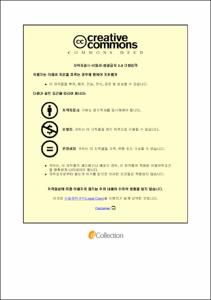병실 내 다빈도 접촉 환경에 대한 간호사와 환자의 인식 비교
- Abstract
- 목적: 병동 간호사와 입원 환자가 병실 내 다빈도 접촉 환경을 어디로 생각하는지 확인하여, 청소 및 소독의 우선순위를 정하고 병원환경관리를 개선하는데 활용하고자 함이다.
방법: 병동 간호사와 입원 환자를 대상으로 병실 내에서 병실 환자가 다빈도 접촉 환경이 어디인지에 대한 인식을 조사하는 상관성 조사 연구이다. 서울시 소재 299병상의 종합병원에서 근무하는 간호사 122명과 입원환자 56명을 대상으로 조사하였다. 선행연구와 국내외 지침을 참고하여 병실환경은 4개의 하부 범주로 구분하여 의료기기 관련 환경 5항목, 화장실 관련 환경 13항목, 병실 관련 환경 10항목, 병실 가구 및 침상 주변 관련 환경 10항목으로 총 38개 항목으로 구성하였다. 측정기준은 11점 도표평정척도(graphic rating scale)로 각 문항마다 ‘거의 접촉 안함’ 0점에서 ‘중간’ 5점, ‘자주 접촉’ 10점으로 점수가 높을수록 다빈도 접촉 환경을 의미한다. 2020년 4월 6일부터 4월 10일까지 자료를 수집하였다.
결과: 병실 내 다빈도 접촉 빈도에 대한 인식에서 간호사는 평균 5.96±1.47점, 환자는 2.35±1.98점으로 간호사가 환자보다 더 많이 접촉한다고 응답하였다. 의료기기 관련 항목 중 모니터 장비, 흡인기, 수액 조절 펌프 기계를 제외하고 모든 항목에서 간호사가 접촉 빈도에 대한 인식이 유의하게 높았다. 간호사가 인식하는 병실 내 다빈도 접촉 환경순위는 이동식 수액걸이가 가장 높았고 침상 난간, 침상 높낮이 조절 손잡이 또는 리모컨, 침상 테이블, 화장실 문손잡이, 화장실 변기, 침상 상두대, 수액 조절 펌프 기계, 침상 조명 스위치, 병실 문손잡이 순이었다. 환자는 이동식 수액걸이가 가장 높아 간호사와 일치하였으나 그 다음 순위는 화장실 변기, 화장실 문손잡이, 침상난간, 침상 테이블, 화장실 세면대 수도꼭지, 침상커튼, 침상 높낮이 조절 손잡이 또는 리모컨, 화장실 전등 스위치, 침상 상두대 순으로 일부 항목은 일치하였으나 순위에는 차이가 있었다. 일반적 특성에 따라 다빈도 접촉 환경의 항목별로 차이가 있는지 확인한 결과 간호사는 직위, 근무부서, 현재 근무부서 경력이 다빈도 접촉 환경에 차이가 있었고, 환자는 성별, 혼자 이동이 가능한지 여부에 따라 차이가 있었다.
결론: 다빈도 환경에 대한 순위는 전반적으로 일치하였으나, 간호사가 환자보다 환경에 대한 접촉 빈도가 높다고 응답하였고, 환자나 간호사의 특성에 따라 인식 정도가 달라지므로 병실 환경관리에서 이러한 부분을 고려하여 우선순위를 정하는 것이 필요하다.|Purpose: The purpose of this study is to identify where ward nurses and inpatients think of the patient's high touch environment, to prioritize cleaning and disinfection and to utilize it to improve hospital environment management.
Method: This is a correlation research study that examines the perception of where the patient's high touch environment is for ward nurses and inpatients. We surveyed 122 nurses and 56 inpatients working at the 299 hospital general hospital in Seoul. With reference to prior studies and domestic and foreign guidelines, the hospital room environment is divided into 4 sub-categories: 5 items for medical device-related environment, 13 items for toilet-related environment, 10 items for hospital-related environment, and 10 items for hospital furniture and bedside environment. It consists of items. The metric is an 11-point graphic rating scale, which means that each item has a high score from 0 for “no contact” to 5 for “medium” and 10 for “frequent contact”, which means the patient's high touch environment. Data were collected from April 6 to April 10, 2020.
Results: In the perception of the patient's high touch environment, nurses responded with an average of 5.96±1.47 points and patients with 2.35±1.98 points. Among the items related to medical devices, nurses were significantly aware of the frequency of contact in all items except for monitor equipment, aspirators, and fluid control pump machines. The patient's high touch environment ranking recognized by nurses was the highest in the mobile infusion hanger, bed railing, bed height adjustment knobs or remote controls, bed tables, toilet door handles, toilet seats, bed tops, fluid control pump machines, bed light switches, hospital rooms The door handle was in order. The patient had the highest mobile infusion hook, which was consistent with the nurse, but the next ranking was the toilet seat, toilet door handle, bed railing, bed table, toilet sink faucet, bed curtain, bed height adjustment knob or remote control, toilet light switch, bed head Some items were in order, but there was a difference in ranking. As a result of confirming that there is a difference in each patient's high touch environment according to the general characteristics, there were differences in the positions of the nurses, the work department, and the current work department in the frequent contact environment. there was.
Conclusion: The patient's high touch environment ranking was generally consistent, but the nurses responded that the frequency of contact with the environment was higher than that of the patient, and the degree of recognition varies depending on the characteristics of the patient or nurse. It is necessary to decide.
- Issued Date
- 2020
- Awarded Date
- 2020-08
- Type
- Dissertation
- Alternative Author(s)
- Heo, Yeon Jeong
- Affiliation
- 울산대학교
- Department
- 산업대학원 임상전문간호학전공
- Advisor
- 정재심
- Degree
- Master
- Publisher
- 울산대학교 산업대학원 임상전문간호학전공
- Language
- kor
- Rights
- 울산대학교 논문은 저작권에 의해 보호받습니다.
- Appears in Collections:
- Industry > Professional Clinical Nursing
- 파일 목록
-
-
Download
 200000334891.pdf
기타 데이터 / 893.79 kB / Adobe PDF
200000334891.pdf
기타 데이터 / 893.79 kB / Adobe PDF
-
Items in Repository are protected by copyright, with all rights reserved, unless otherwise indicated.